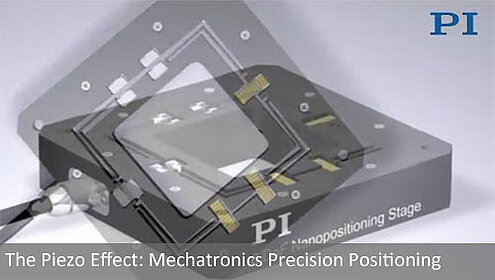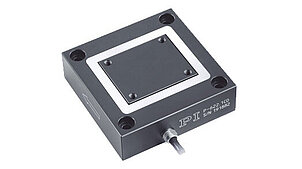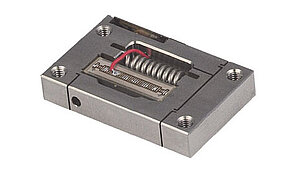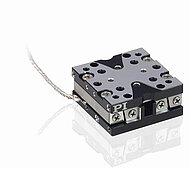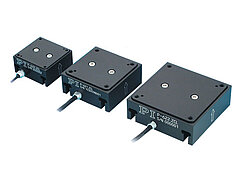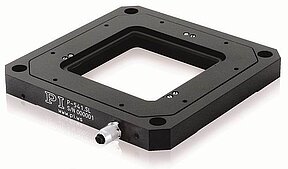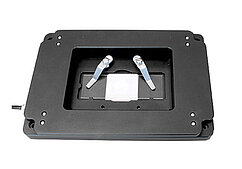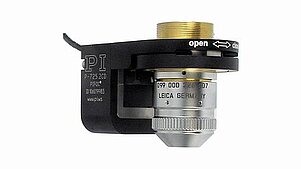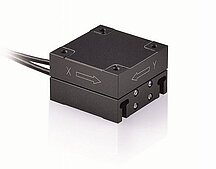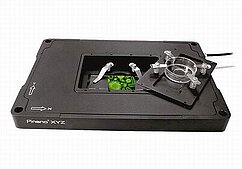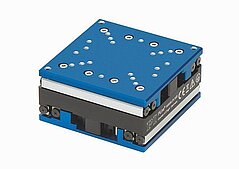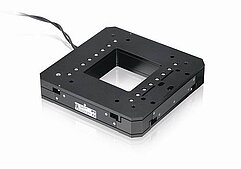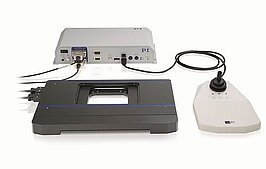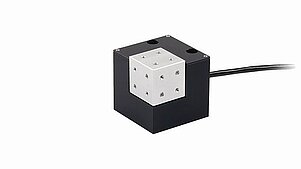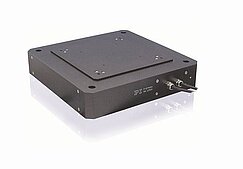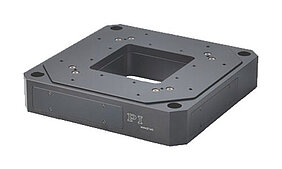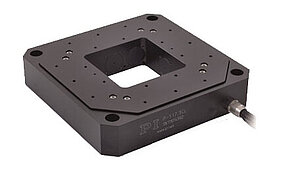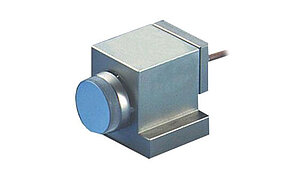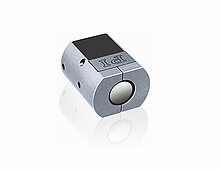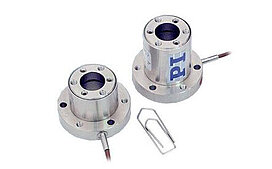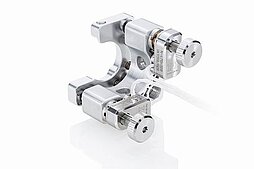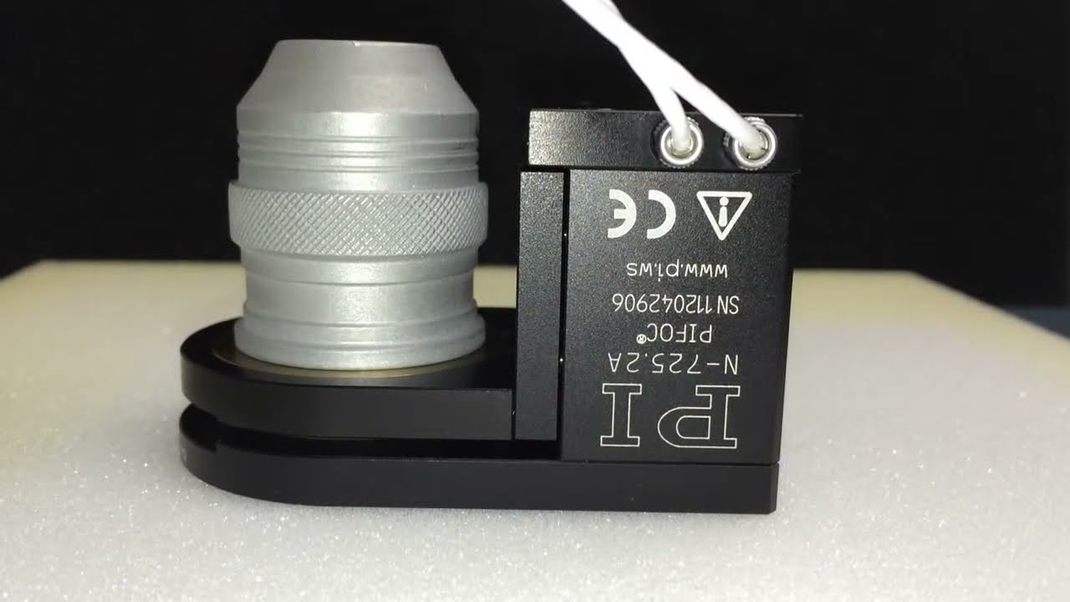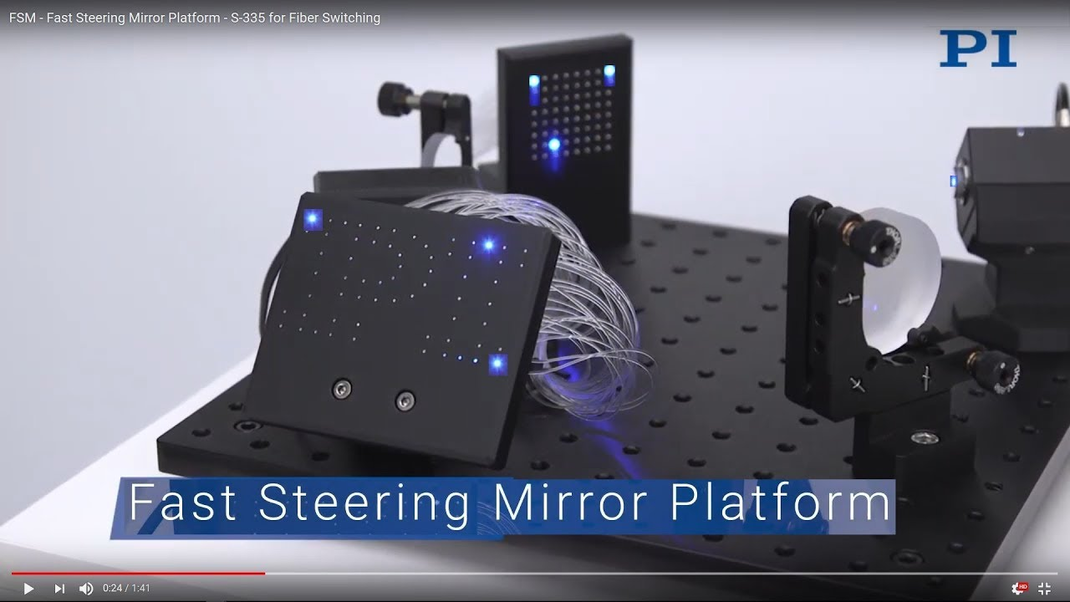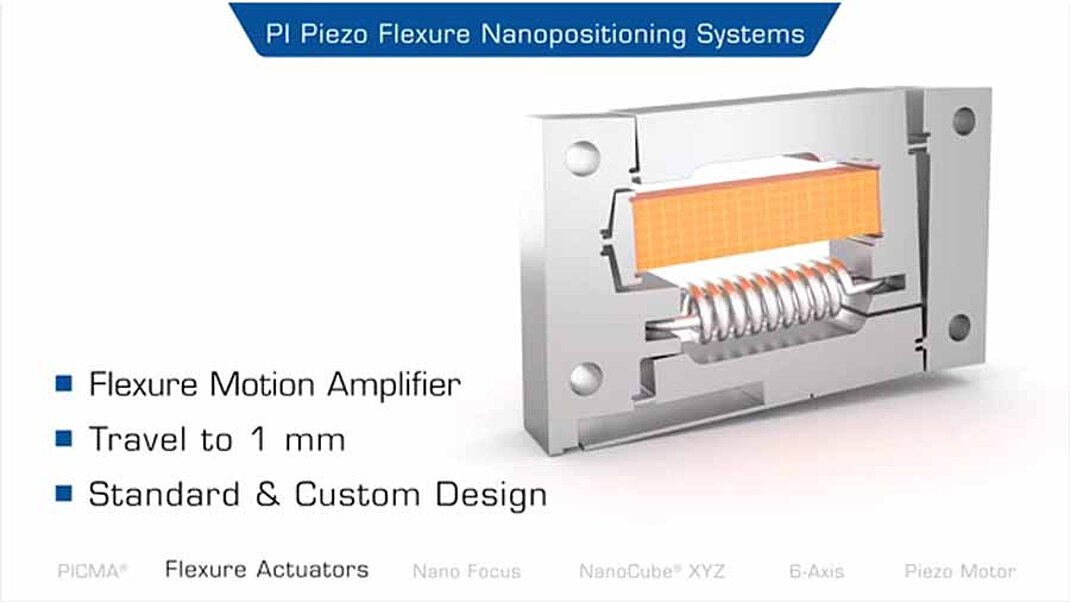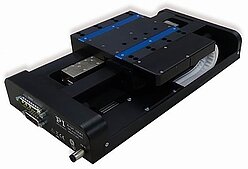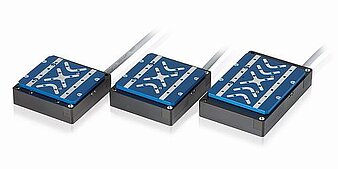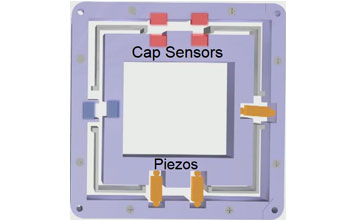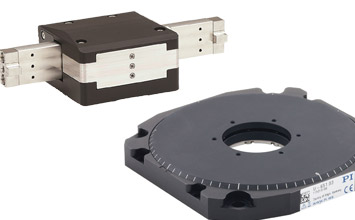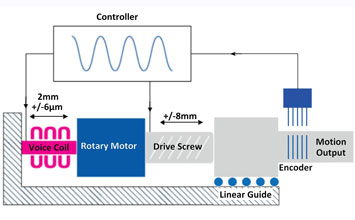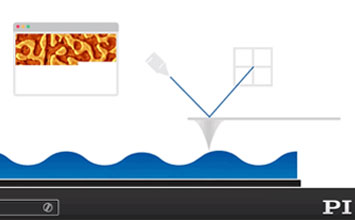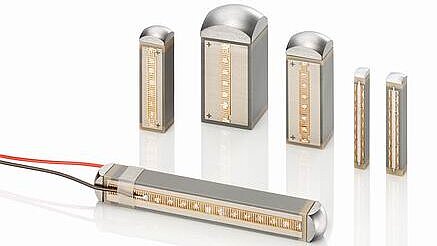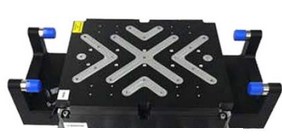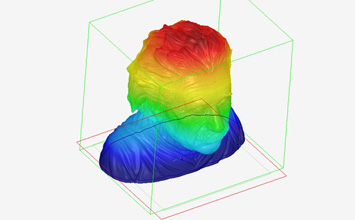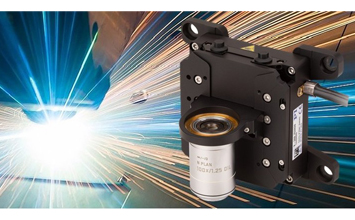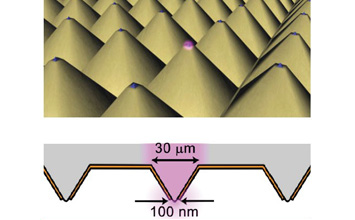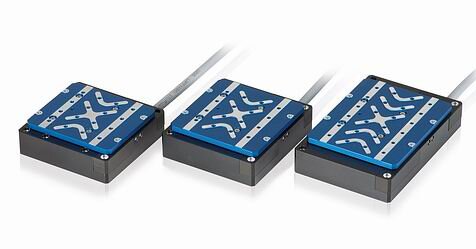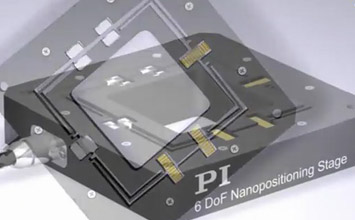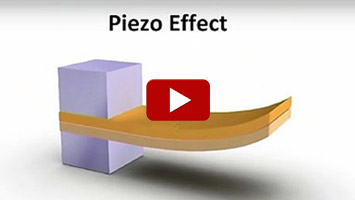Piezo stages and nanopositioners are critical motion components in semiconductor, photonics, and life science applications where nanometer precision, high scanning speeds or fast step and settle are crucial for success. Flexure-guided piezo nanopositioners have been established in countless 24/7 industrial and research nanopositioning applications as the highest performing mechanisms when it comes to throughput, lifetime and precision.
A nanopositioning stage is defined as a positioning device capable of nanometer or sub-nanometer resolution. PI offers several types of nanopositioners, including voice-coil drives, air bearings, and linear-motor stages. For nanometer and sub-nanometer precision and the highest dynamics and guiding precision, piezo stages with flexure guiding are recommended, because of the highest straightness and flatness of motion and the smallest pitch, yaw, and roll errors. Closed-loop operation with direct metrology position feedback, such as capacitive sensors provides excellent linearity and repeatability.
PI provides a large variety of nanopositioners including linear piezo stages, XY piezo stages, vertical piezo stages, XYZ piezo stages and even 6-degree of freedom nanopositioners. For microscopy and laser steering applications, piezo z-lens focus devices and piezo tip/tilt mirror mounts are available.
All PI flexure-guided piezo positioners are built from-friction free, zero-wear components and provide excellent responsiveness with step & settle typically in the millisecond range. The flexure guiding system also guarantees minimal tilt and out-of-plane motion.
Applications such as image scanning, overlay, fast autofocus, interferometry and super-resolution microscopy, greatly benefit from these characteristics. Conventional motorized positioners have too many limitations, such as friction, slow-response and position stability.
What is a Piezo Stage?
When we break down the term " Piezo Stages", we can gain a better understanding of its components. Let's start with the term "stage". In this context, it's a platform that holds a specimen or material for alignment, micro-manipulation or microscopic or imaging. The specimen could include biomedical samples, semiconductor chips, or fiber optic components. In order to bring the specimen into sharp focus, or align a fiber optic component, the stage has to be moved in extremely small, precise increments.
This brings us to the term "piezo", short for piezoelectric. Piezo is derived from the Greek word meaning "to press or squeeze". Back in 1880, the Curies discovered that applying pressure to certain materials, especially crystals, induced an electric charge in them. On the other hand, applying an electric field would change its dimensions ever so slightly, analogous to the applied voltage – the first application of motion control with nanometer resolution.
So, a piezoelectric stage, or piezo stage, is a platform whose movement is driven by a piezoelectric device, often referred to as actuator or motor. The platform requires a precise guiding system and flexures provide the highest performance. Contemporary piezo stages are often equipped with a position sensor to provide exact position information to a closed-loop piezo motion controller that can be operated through a computer interface.
Different Types of Piezo Stages
There are variety of different piezo stage types. The ones providing the highest precision are flexure guided employing capacitance position feedback sensors. These stages can either be directly driven by a piezo stack, providing superior stiffness and dynamics. When larger travel ranges are required, motion amplified piezo stages provide travel ranges up to 1mm or more.
For even larger travel ranges to 100mm or more, ultrasonic, walk-type or stick slip piezo motor stages are offered.
Read our piezo motion tutorial for details on piezo stages and piezo motors.
Piezo Stage Buyers Guide
When purchasing a piezo stage, several factors should be taken into account to ensure you acquire the best fit for your nanopositioning and precision motion application. Not all piezo stages are created equal. Flexure stages provide the highest precision, piezo-motor stages provide travel ranges like traditional motorized stages with mechanical bearings. Here's a simplified guide to aid you in the selection process:
1. Requirements and Specifications: Understand the requirements of your application exactly to match them to the specifications of the product. Key specifications include:
- Dynamic performance: maximum scanning frequency, step-and-settle time and error budget, maximum dynamic error
- Geometric performance: straightness, flatness, pitch, yaw and roll
- Precision: linearity, accuracy, repeatability
- Travel rage and number of controlled axes
- Duty cycle: Especially for high-speed scanning - how many million or billion cycles does the stage have to last
2. Environment: Piezoceramics is generally vacuum compatible, but other materials used in a piezo stage may not be. However, flexure stages can easily be made UHV compatible, since they don’t have any bearings that require lubricants. Piezoceramics are also non-magnetic and not affected by magnetic fields, which is why non-magnetic piezo stages are available. Flexure stages are intrinsically clean-room compatible, since there are no lubricants or any wearing items. Stick-slip stages, on the other hand, generate particles that could be an issue.
3. Controller and Interface: Analog servo controllers (not be confused with an analog interface) can provide very high resolution and low noise at a budget price. Digital servo controllers allow for advanced linearization algorithms, higher flexibility, and easy remote tuning. Both can offer analog and digital interfaces. Also, it's essential to have good software support to get the maximum out of your piezo motion controller.
4. Manufacturer Reputation: Investigate the reputation of the manufacturer. Companies with a proven track record in manufacturing piezo stages are more likely to provide reliable, high-quality products. Check reviews, or search google scholar for number of listed publications, and ask for referrals if possible.
5. Application Support and Warranty: Check out warranties and extended warranties. Choose a manufacturer that has a good understanding of your application with engineers that can provide specific tuning, setup, and application support or customization if necessary.
Other Nanopositioning Stages
Air Bearing Nanopositioners: In addition piezo flexure-guided positioners, PI also provides long travel air bearing nanopositioning stages and unique hybrid drives, several types of piezo-motor-driven stages with long travel ranges and miniature positioners with piezo stepper motors.
For extreme applications,magnetic levitation positioners are also available. In other words, PI can provide the appropriate technology for any application.

